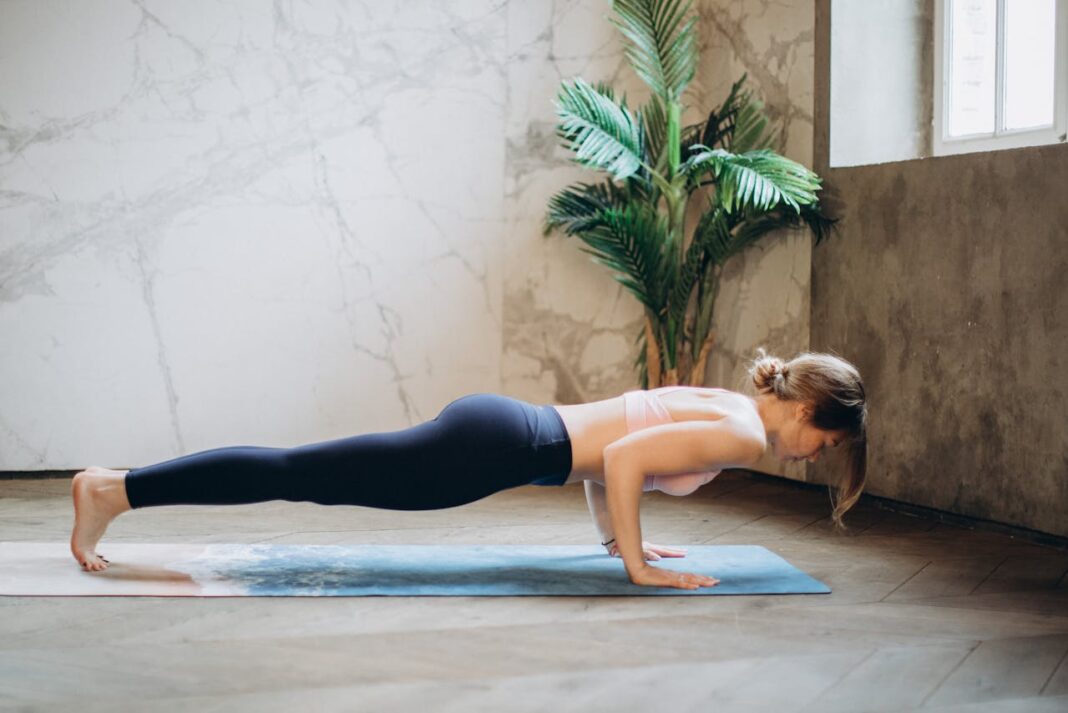The perfect push-up is always a topic (and challenge) for all exercisers. Admittedly, we have to confess that we are guilty of this too, but you can’t blame us. Push-ups not only strengthen your arms, shoulders, and chest, but they can also improve your coordination and body awareness. There are countless variations to make the exercise easier or more difficult, and you are guaranteed not to get bored. It also seems to be a good test of your general health—the more push-ups you can do, the lower your risk of developing cardiovascular disease, according to this study published in JAMA Network Open.
But back to perfect execution. It is complex, and our body is always looking for ways to make it easier for us. Sometimes we can cheat. The hips sag or are pushed too far up, the full range of motion is not used, or the hands are placed too far apart. These mistakes are often not that serious, but they prevent you from benefiting from the full training effect of the exercise.
There are many instructions for learning how to do push-ups properly, and the internet is full of tips on how to do them correctly, preliminary steps, and mistakes to avoid. All of this is important on the way to the perfect push-up, no question about it. But regardless of whether you are just starting out or want to perfect your technique, you can and should challenge and strengthen the muscles used in push-ups with other strength exercises. These include, above all, your chest muscles, your triceps, and your core. And you can train these even before you can power through a whole set of perfect push-ups.
#1 Floor Press
The exercise is similar to the bench press, but it makes it easier for beginners to get started because it requires less coordination. This allows you to concentrate on getting a feel for pressing the weights and targeting your chest and arm muscles.
Lie on your back with your feet up, knees pointing towards the ceiling, elbows close to your body, and at a 90-degree angle to the floor. Exhale and push the weights up until your elbows are straight. Your palms are facing away from you. Bring your elbows back to the floor and repeat the movement. Integrate the exercise into your training plan for three rounds of 8 repetitions. Choose weights that make the last repetitions feel difficult but doable. Increase from unit to unit until you can do 12 repetitions, and then start again with the next heavier weight at 8.
Muscles: chest muscles, triceps
Note: Keep your elbows close to your body so you have more control over the execution and can better target your muscles. Press your lower back into the floor during the exercise.
#2 Military Plank
You want to form a straight line with your body in a push-up, but for many people, it looks more like a suspension bridge. To prevent this from happening, the military plank helps you to build and maintain core tension. Start in the high plank position, build tension in your upper body, buttocks, and legs, and then place your right forearm down, followed by your left. First, place your right hand, then your left hand, and push yourself back up. For the next repetition, start with your left arm. If the exercise is still too challenging, hold the position in the forearm plank.
You can incorporate the exercise into your core training or a circuit; try to do three rounds of 30-45 seconds.
Muscles: core, shoulder, and arm muscles
Note: Do not let your pelvis rock back and forth as you change position. Your body forms a straight line and is under tension.
#3 Triceps Extension
Your triceps have to work hard to do a good push-up. You can prepare them for this with this exercise. Grab a light to medium-weight dumbbell or weight plate with both hands and hold it in a stable position with your hips width apart and your arms stretched out above your head. Bend your arms 90 degrees and bring the weight behind your head. Only your forearms move. As you exhale, stretch your arms again and repeat the movement for the next repetition. Do three rounds of 8-12 repetitions and increase the weight when you can do 3 x 12 repetitions well.
Muscles: Triceps
Note: Do not turn your elbows outwards and keep your upper arms still.
Extra Tip: Bent Over Rows
If you’re working towards push-ups, you’re primarily training pushing movements. Make sure your training is balanced and also includes pulling movements. An effective classic for your upper body is rowing with dumbbells. You can find out more about push & pull as the basics of strength training here.
Muscles: Back muscles, biceps, rear shoulder
Note: Keep your back long and your pelvis tilted slightly back for more stability in the torso.

